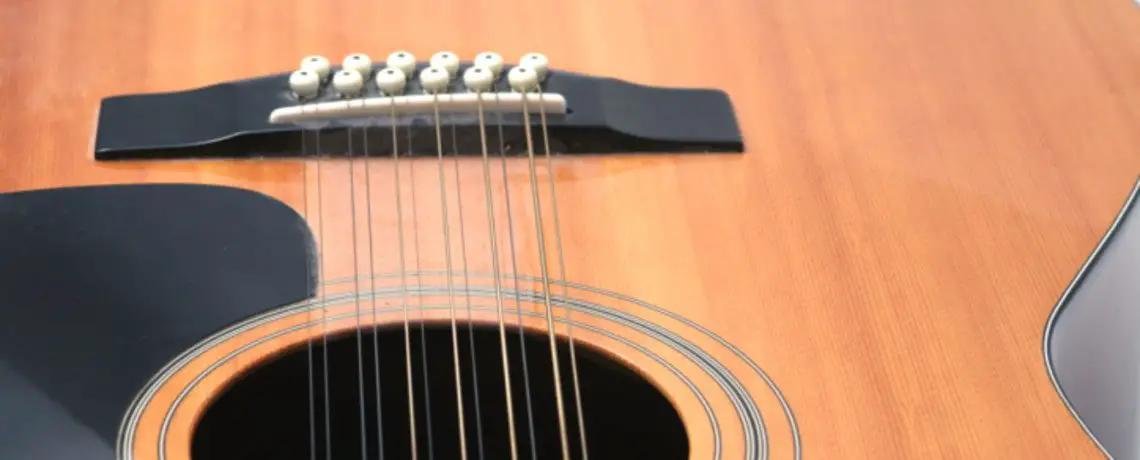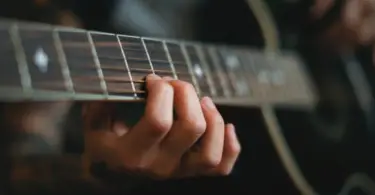The Competition
After hours of testing and research, here's the final competition.
| Instrument | Rating | Current Pricing |
|---|---|---|
The Martin D12-28 | Produces one of the richest sounds known to Mother Nature |  |
Taylor 656ce | Made of maple instead of mahogan |  |
Audacity | The real beauty of the ES-335 are the Burstbucker rhythm and lead pickups |  |
Presonus Studio One | Has a mahogany neck with an Indian rosewood fingerboard |  |
Apple Logic Pro X | The coolest features of this guitar is the vintage hockey stick head stock |  |
Breedlove Stage Twelve-String | Guitar makes the transition to electric much easier |  |
Homdox Adjustable Keyboard Bench | Features a silver maple neck with a rosewood fretboard |  |
FL Studio (Fruity Loops) | Features a rosewood fingerboard mounted on a maple neck. |  |
Double the strings, double the twang, double the punch, and a shimmering harmonic effect, the twelve-string guitar is simple in concept but allows for a veritable menagerie of sonic effects impossible to achieve with any other acoustic instrument. If you’ve grown bored with your six-string or have been looking to up your picking game, the twelve-string might be just the thing to do it.
If you are looking for the best twelve-string to add to your quiver, do yourself a favor and pick up a Martin D12-28.

Credit: C.F. Martin & Co
Top Pick: The Martin D12-28
C.F. Martin has been at this game for a long time. We found the D12-28 bursting with small details and flourishes that tipped the scales in its favor.
We did not come to this decision easily, naturally, or without causing our psyche’s considerable pain and lasting trauma. How are we, indeed, to come forward and say that we have found the best of the best? Here’s how: we hit the books. We read all the information we could about the twelve-string, its history, its quirks and shortcomings, and glories. We spoke to our friends, whom we trust and respect. And finally, we played.
We’re not saying that we sat down and played every single twelve-string on planet earth, but we took our fingers and picks to a good many of them. After hours of playing and our fingers were raw, we had our answer. Read on and find out everything we learned.
First, we’ll define some lingo, talk about what makes a twelve-string a twelve-string, and lay out a brief history of the twelve string and talk about a couple historic sounds the instrument has produced. Next we’ll move into what to look for in a twelve-string, some factors to consider, and try to answer a few FAQs. Next, we’ll get into the guitars.
One brief caveat: this article concerns itself with acoustic guitars. There are, however, a wide variety of electric twelve-strings as well. While they did not weigh into our decision for the best of the best, we will treat with them at some length below.
Some brief terminology.
You probably know this, but if you don’t, you will soon.
Parts of the Guitar:
body – that big round part where the sound comes out.
sound hole – that hole where the sound really comes out.
bridge – the thing the strings go into. This is one of the most delicate, important parts of the guitar and will feature heavily into how your guitar sounds.
soundboard – the top of an acoustic guitar.
neck – that long flat piece of nice wood emerging off of the body.
fretboard/fingerboard – that thing upon which your fingers dance (top part of the neck, containing frets).
fret – the space between the metal bars along the neck that help you play regular notes.
nut – the bar upon which the strings rest at the juncture of the neck and the head.
head – the thing on top of the neck that holds the tuning pegs.
tuning pegs – the things you turn to control the tuning of each individual string. Twelve strings means twelve tuning pegs.
Terms:
action – the distance of the strings from the guitar. Low action is good, high action is evil.
warping – when the neck gets bent because of prolonged pressure from tightened strings.
tuning – the harmonic arrangement of your strings. Infinite tunings exist, but standard tuning goes, from lowest to highest, EADGBE.
What exactly is a twelve-string guitar?
The idea is simple, but the harmonic physics, tunings, and constructions are definitely more complicated. The basic notion is that each string of a guitar in standard tuning (EADGBE) is represented … twice. The lower eight strings—EADG—are usually accompanied by lighter strings tuned an octave higher, while the B and the high E strings are merely doubled.
This presents a singular issue in terms of guitar construction: how is this going to sustain such pressure. The necks on even the best six-strings will warp over time. To counteract this warping, most self-respecting guitars will have a steel truss rod that runs the from the head to the body inside the neck.
When it comes to twelve-strings, where that pressure is nearly double that of six strings, this truss rod needs to be beefier. Twelve string necks are usually attached more securely to their bodies and widened to accommodate these extra strings. Some twelve-string makers have compressed the fret intervals to make a shorter, sturdier neck to combat pressure as well.
Keep in mind that if your twelve-string begins to warp, the truss rod inside your neck can be adjusted to correct this bending and bring your action down nice and low. Also keep in mind that if you crank that even a quarter turn, you might crack your neck in half. It would be best to send it to a luthier.
Who put six more strings on a guitar in the first place?
There is a simple answer to this question: nobody knows. Whoever caught that lightning bolt of inspiration has been lost, but his (or her??) invention certainly hasn’t. We do know, however, something about who that person probably was.
Writing in the November 1997 edition of Acoustic Guitar, Michael Simmons has two theories that hold some water here. The first is the man came to North America from Italy. This is supported by the fact that, until the emergence of the twelve string, few instruments with strings doubled in tandem or in octaves.
The significant one that did exist was the eight-stringed arch-top mandolin, a notable Italian import to the U.S. Simmons writes that Leadbelly, according to “family legend” (which family is unclear) ordered his custom 12-string Stella from one Fulvio Pardini.
Twelve-strings were, of course, around for a time before Leadbelly took the stage. Simmons writes that an equally compelling theory is the instrument was adapted or came from Mexico, where the mariachi bands often featured alternative guitars, such as “the tiple, the charango, and the cuatro.”
Gregg Miner offers a highly detailed article for HarpGuitars.Net in which he cites an 1896 article that talks about the new invention of Clark Brown, the harp-guitar. Brown’s new guitar had ten strings, not twelve, but the extra strings doubled the lower four strings of a guitar at octave intervals, just like the twelve-string of today.
Why put six more strings on a guitar anyway?
There are several reasons why you may wish to double your guitar’s stringage. Before amplified sound was a thing, a huge reason was volume. With six more vibrating pieces of metal you can crank it up to 11. Many players, however, seek out quality over quantity. Twelve-strings can play soft and dreamy, or harsh and twangy, or loud and punchy like no other guitar.
The nature of this unique sound has to do with the physics of the instrument. While the strings are doubled, either identically or an octave apart, the two strings will never vibrate along the same phase. When struck, the two strings will make the same note but they will not ‘sound’ the same. This is the ‘chorus effect.’ It will create a kind of slow vibrato effect that generally emphasizes whatever you are playing.
What should I look for in a twelve-string?
As we wrote earlier, one of the main challenges in creating a twelve-string guitar is reinforcing the neck and its connection to the body to withstand the added tension of six extra strings. Inferior brands will skimp on this step and, within a short time, your action will be a half-inch off the neck at your twelfth fret and you won’t be the happy twelve-string maestro you once were.
On the other hand, you want your guitar to sound as good as it can. While high-end twelve-strings will have reinforced necks, they won’t take any measures to sacrifice the quality of the noise they make. These instruments need to be handled with care.
Another key feature of any guitar is the bracing pattern used under the soundboard. The tension of the strings we’ve discussed has two points of contact: the end of the neck/head and the soundboard. Bracing inside the body supports the soundboard structurally and fundamentally affects how acoustic guitars sound.
High-end guitar makers have discovered that an X formation here produces the best quality sound. In fancy six strings, they will even move this bracing above the soundboard to right below the sound hole. This is known as a ‘High X.’ Twelve-strings, however, maintain such high tensions that this feature is simply impossible and, therefore, each has merely a regular X shape of bracing.
To the untrained eye, all acoustic guitars look the same. But for us who play, we know that the shape creates subtle differences in sound, volume, and tone. There are five main acoustic guitar body shapes: concert/grand concert, auditorium/grand auditorium, dreadnought, jumbo, and travel or mini-acoustic variations.
With any guitar shape, the guitar maker is balancing sound quality with comfort. A basic rule of thumb is the larger the soundboard, the greater the volume and nuance of tone. You don’t want to go so big, however, that the instrument isn’t playable. You also may want to prioritize a cutaway version, which literally cuts away the body near the higher frets so that musicians can get their fingers to these notes.
In this article, we’ll be prioritizing the dreadnought guitar shape of the Martin D12-28 for its higher quality of noise. The dreadnought was developed by C.F. Martin & Co. back in 1916. Back then, the word ‘dreadnought’ referred to a huge, gun-laden battleship, typified by the British HMS Dreadnought. This guitar shape is a big-bellied vessel that certainly carries a lot of firepower. It is big and it is loud, and it sounds terrific.
We will discuss other guitars with different shapes below. Always make sure to play the guitar at length before choosing which is right for you.
What role does the wood play in the guitar?
Quality guitar makers choose the wood they use to make their instrument for quality of sound, strength, and appearance, in that order. They often choose a hardwood for the body and neck because, as their name implies, they are harder than softwoods, which are often used in cheaper models because of their low cost. Guitar makers tend towards maple, basswood, mahogany, or ash in this regard.
When it comes to the twelve-string, as we have mentioned again and again, the higher tensions completely change the game. While the hardwoods chosen for fancy six-strings produce beautiful tone, they are simply not as strong as other woods, or require extra bracing or thickness that will otherwise compromise the guitar’s tone.
Many twelve-strings, as a result, use a softwood soundboard because of their higher strength to weight ratios. Don’t think that this is a cheaper solution, it’s the best solution considering the structural difficulties of the guitar.
In regard to the neck, there is more leeway due to the steel bar that reinforces it. The composition of the neck is often underrated regarding the tone of the guitar. Everything is connected, and it vibrates the same as the soundboard and the rest of the body. Here, you’ll want something like maple, ash or mahogany.
Top Pick: The Martin D12-28

Credit: C.F. Martin & Co
Now you know most of what there is to know about the twelve-string, and here’s why you might choose the D12-28.
The neck is made of mahogany, a wood that produces one of the richest sounds known to Mother Nature, especially in the lower registers. The 20-fret fretboard is made of solid black ebony. This is a real style move. Ebony is one of the longest lasting, most dense, yet giving, comfortable wood used in the necks of guitars.
Until the mid-twentieth century, it was common to use ebony to make the grips of handguns and certain rifles, along with fine cabinetry, decorative carvings, and chess pieces. Due to these great qualities and its beautiful look, the tree has grown incredibly rare and expensive. You’re going to love the way this fretboard feels. It extends 14 frets above the body and stretches 2 5/16″ wide at the twelfth fret, reducing to 1 7/8″ at the nut.
D is for dreadnought. This guitar has the classic dreadnought body. Once C.F. Martin & Co. got this shape right back in 1916, they realized they were on to something. The dreadnought is now a common acoustic guitar shape, imitated by competitors all over the world.
The sides and back of the D12-28 are made from East India rosewood. Like the other woods used to make this guitar, this rosewood is known for its strength and density. Like ebony and mahogany, it has grown increasingly rare due to its popularity in acoustic instrument construction.
For the soundboard, Martin has chosen sitka spruce. This is the largest species of spruce on earth. It is one of the few trees that grows over 91 meters. To get that big, you need to have strong wood. Compared to its strength, it is also incredibly light. When the Wright Brothers first took flight, their plane was constructed of Sitka spruce, as were several other early models.
In addition to its high strength to weight ratio, the grain also has very few knots. As a result, this wood is an excellent conductor of sound, and the perfect fit for the high tensions of a twelve-string. The bracing below the soundboard is, of course, an X shape to ensure the finest sound.
Besides these killer qualities, the D12-28 is replete with small details and flourishes. The bridge is made of the same beautiful ebony as the fretboard. Speaking of the fretboard, it’s inlaid with mother-of-pearl. The neck joint bears a dovetail construction where it joins the neck. The nut and the saddle are made of bone.
Based on your preference, you can order the guitar equipped with a built-in electric pick up. Guitar purists will tell you that this compromises the sound, but if you’re going to be plugging in, it’s a better solution than slapping on a sound-hole pick up. These are some awesome features, and they come at an awesome cost.
The D12-28 retails new for $3,599.00 but, because it’s a pretty unique, specialty item, you can find one for less with a little hunting around. The used market is especially favorable for this guitar, and you can find some models on eBay for under $1,000 if you’re patient.
You simply cannot go wrong with the D12-28. Martin has been in the game longer than most, they invented the shape, and their twelve-string model has everything you need to create the most beautiful, goosebump-inducing, hard-hitting sound you could hope to achieve.
Runner Up: Taylor 656ce

Credit: Musician’s Friend
Much of the Taylory 656ce matches up with the Martin D12-28, but other features fall short.
Like the D12-28, the 656ce features an ebony fretboard. 14 frets extend from the body and it has 20 frets in all. The 656ce’s neck, however, is made of maple instead of mahogany. The fretboard maintains a constant width of 1 7/8,” making it skinnier than the D12-28.
Taylor chose maple for the sides and backing. Compared to East India rosewood, maple is not as dense and its grain runs in one direction. Some, however, do prefer the bright sound that maple creates over that of rosewood. The 656ce does, however, boast a Sitka spruce soundboard. Good choice guys.
The 656ce takes a grand symphony shape with a venetian-style cutaway. Many players find this easier to hold as the waist sits easier on the knee than a dreadnought. It does not, however, have the same chops as a dreadnought. While it will sing, it won’t hit the same richness in timbre as the D12-28.
The bracing under the soundboard is a Taylor branded structure known as “Advanced Performance with Relief Rout.” This is basically a take on the X style of soundboard bracing, providing for a great, warm tone and increasing sustain. The ‘Relief Rout’ feature is patented feature involving a small chiseled groove along the inside edge of the soundboard.
This follows the general logic of arch-topped stringed instruments: the more surface area on the soundboard, the bigger and bass-ier the sound. This might make up a little of what is lost by using the grand symphony over the dreadnought shape, but it doesn’t get all the way there. Retailing at around $4,350, the Taylor will cost you more and get you less, although it’s still a righteous 12-string.
Other cool aspects of the 656ce are its ebony pickguard, built-in quarter-inch jack to plug in, tuner, and all sorts grained ivoroid inlay on the fretboard.
Electric Runner Up: Gibson Memphis ES-335

Credit: Gibson Brands
Ok, this article has kept things exclusively acoustic, but we salivate over 12 string electrics just the same as you. If you’re looking for the best electric twelve-string, you better make it the Gibson Memphis ES-335.
This guitar is a real Cadillac. The semi-hollow f-hole style body is a 3-ply of maple-poplar-maple for a bright, poppy sound. A rosewood fingerboard with a pearloid inlay is mounted on a mahogany neck, so you can be sure that once you get the action right, it will stay that way for years. .8″ at the nut, the width of the neck tapers down to .875″ width at the twelfth fret.
The real beauty of the ES-335 are the Burstbucker rhythm and lead pickups. These devices are intended to recapture the revolutionary sound of the PAF Humbucker pickup designed by Seth Lover in 1955.
Up until that point, pickups used a single coil. These were prone to feedback, hum, and crackling. By adding a second coil, the two resounded in unison, but out of phase—exactly like the doubled steel of a twelve string guitar—and cancelled out the interference. Double-coil pickups favor the lower registers, are louder, but less harsh, and generally richer than single coils. Pair these epic double coil pickups with all the qualities of a twelve-string on a semi-hollow body? Oh baby, are you salivating too?
The ES-335 retails for around $3,000. You better believe you’re getting what you’re paying for.
Honorable Mentions (Back to Acoustic)
Guild F-1512

Credit: Guild Guitars
Many readers might be scratching their heads at this point wondering how we haven’t mentioned a Guild twelve-string up to this point. It’s true, when it comes to twelve-strings, Guild guitars have a great reputation.
The F-1512 has a mahogany neck with an Indian rosewood fingerboard. The body has rosewood sides and back with a—surprise, surprise—Sitka spruce soundboard. Beneath the soundboard, you can find Guild’s own take on an X-style bracing. The F-1512 has a jumbo body shape—the same that Leadbelly played.
With a bone nut and rosewood bridge, you certainly will not go wrong with this guitar, especially since it retails at about half the cost of the Martin D12-28. We believe the jumbo shape has a generally better sound than the Grand Symphony, but nothing beats a dreadnought. It retails around $1,300 and a pick up can be added for an extra price.
Fender Villager SCE

Credit: Musician’s Friend
We have another epic dreadnought here with an added cutaway for high-note riffing. A maple neck sports a rosewood fingerboard on top. Nothing new there. The body has mahogany sides and back, and the soundboard is made of spruce. Scalloped X bracing runs underneath and the bridge is rosewood with a bone saddle. The nut is also bone.
Aesthetically, one of the coolest features of this guitar is the vintage hockey stick head stock—it looks like what it sounds like. The bridge also kind makes this guitar look like it has a mustache. Overall, the Villager SCE sounds great and is a great mid-range guitar. In terms of tone, however, it just doesn’t match up with the other competitors. You can bring this guitar home for around $500.
Breedlove Stage Twelve-String

Credit: Breedlove Guitars
This concert cutaway guitar is one fine iteration of the twelve string. With a neck of mahogany, a freboard of rosewood, sides and back of rosewood, and a soundboard of that glorious Sitka spruce, the Breedlove model matches up with the rest of the competition in several ways. The Breedlove does not use an X style bracing. Instead, they employ their own ‘bridge-truss’ bracing. You can learn more about that style here.
Users have reported that the Breedlove excels when it comes to plugging in. The built in electric hardware is comprised of a preamp mounted directly on the sound hole. Combined with the concert shape, this guitar makes the transition to electric much easier than the other twelve-strings that focus more on the grandeur of their acoustic sound.
This also means that its own unplugged tone will lack force and range compared to the other jumbo, grand symphony, and dreadnought models, but if you’re looking for something to use onstage, the Breedlove is an excellent choice. It retails around $1000.
Seagull Coastline Series S12

Credit: Seagull Guitars
The Seagull model features a silver maple neck with a rosewood fretboard that sports 21, not 20 frets like every other model featured in this article. This dreadnought guitar has wild cherry sides and back with a cedar soundboard. While cedar, like Sitka spruce, has a great strength-to wait ratio, its grain is typically knottier and it simply does not conduct sound like Sitka.
Possibly because of the cedar soundboard, some users prefer the sound of the S12 to Sitka spruce guitars. Reviews of this guitar are, in fact, overwhelmingly positive (as they have been for every guitar mentioned so far). It may just be that you prefer it; at $400 it’s definitely worth a shot.
Gretsch G5022CWFE-12 Rancher Falcon

Credit: Gretsch Guitar
This Gretsch model has all the smackings of a righteous twelve-string. A jumbo body with maple backing and sides, scalloped X bracing, and spruce soundboard make this guitar quite comparable to the other models. It features a rosewood fingerboard mounted on a maple neck.
It’s electronics make it a great choice for a twelve-string that you intend to plug in. Controls include volume, bass, middle, treble, and a tuner. With the classic Rancher triangular sound hole, a white finish, and plenty of sparkly gold, this guitar straight up looks cool. Like the Breedlove Stage S-12, if you intend to play your twelve-string predominantly through amplification, you should check this guitar out. It retails for roughly $800.
That’s all. Happy playing, may your twelve strings resound forever.
Sources:
- A Guide to Gibson Pickups. (2016, December 12). Retrieved February 10, 2017, from Dawsons.co.uk, http://www.dawsons.co.uk/blog/a-guide-to-gibson-pickups
- FAQ Quick Links. (2017). Retrieved February 10, 2017, from Breedlovemusic.com, http://breedlovemusic.com/support/faq
- Martin Guitars Bracing Patterns. (2017). Retrieved February 10, 2017, from MartinGuitar.com, https://www.martinguitar.com/features-materials/bracing-patterns/
- Meier, E. (2016). East Indian Rosewood. Retrieved February 10, 2017, from wood-database.com, http://www.wood-database.com/east-indian-rosewood/
- Miner, G. (2016, August). The birth of the American 12-string guitar by Gregg Miner. Retrieved February 10, 2017, from harpguitars.net, http://www.harpguitars.net/history/grunewald/12-string.htm
- Picea sitchensis. (2017). Retrieved February 10, 2017, from Wikipedia.com, https://en.wikipedia.org/wiki/Picea_sitchensis
- Simmons, M. (November, 1997). The Origins of Twelve String Power. Acoustic Guitar. No. 59








Start the discussion at talk.hearthemusicplay.com